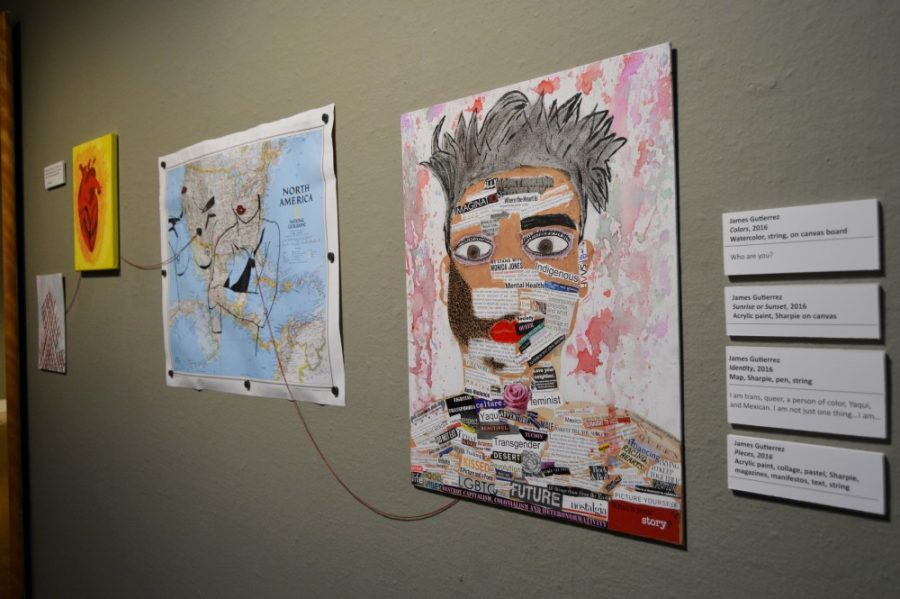The UA Museum of Art and the Tucson Museum of Art have teamed up to present Mapping Q, a community arts education program aimed toward lesbian, gay, bisexual, transgender and questioning youth. In previous years, the UA Museum of Art ran the program but the TMA, the Museum of Contemporary Art Tucson, the Southern Arizona AIDS Foundation and the University of Arizona School of Art have come together to expand the program.
Mapping Q started as a way to project the marginalized voices of the LGBTQ youth.
RELATED: Tucson’s Warehouse Arts District
“The goal of the program was to create a space/program/exhibition where the voice of LGBTQ youth was privileged,” said Chelsea Farrar, assistant curator of education at the UAMA.
The program aims to build confidence through artistic expression for the LGBTQ youth, a group that is often plagued by suicide and depression.
LGBTQ youth who may have been doubtful of their abilities have found assurance as artists through the Mapping Q program. One of the participating artists, James Gutierrez, expanded his understanding of art through the art that he created about himself.
“Mapping Q changed the way I looked at art,” Gutierrez said, “it gave me a new perspective.”
Along with helping the artists express their own confident individuality, Mapping Q serves as a space in the museums where LGBTQ voices can be proudly displayed. Marianna Pegno, associate curator of education at the TMA, sees this program as more than just an exhibit — it helps shifts the scales of the art world.
“It is an opportunity to be critical of and question the predominant heteronormative narratives that permeate displays and institutional structure,” Pegno said.
Artists are not limited to creating traditional forms of art and can utilize a variety of mediums to convey their stories and emotions. Pegno said that some of the mediums the program offered this year included video, installation, painting, sculpture and collage.
“Because there is not ‘one method’ or technique, there is no wrong way to make an art project during Mapping Q,” Farrar said, adding that they encourage artists to find the medium(s) that work best for them.
She said many of the previous participants return to the program with new ideas and ways to visually express themselves.
After events like the Pulse night club shooting in Orlando, the validity of “safe spaces” for LGBTQ individuals has become more questionable. Farrar said that although Mapping Q could never eliminate that feeling of violation that continues to exist, the program can help change societal views.
RELATED: Experience evening beauty with Tucson Museum of Art’s latest exhibit “Into the Night”
“What [Mapping Q] and other LGBTQ programs in community spaces like museums can do is work to realign a cultural system that privilege one identity over another,” Farrar said.
Art, as a reflection of society, cannot rely on a one-sided perception of reality and Mapping Q helps inject these marginalized narratives into the mainstream. Solidarity is crucial to the confidence that LGBTQ artists need to comfortably produce their art, and programs like Mapping Q can build confidence and foster creativity among artists.
“It can give [the artists] the much needed space they need to feel safe and provides a space [for] hanging with other LGBTQ youth,” Gutierrez said.
The exhibition spans three venues — the UAMA, the TMA and a video screening at MOCA.
There is a collaborative poem written by all of the artists that is shared between the UAMA and the TMA. Farrar said that each museum offers a unique experience but visitors have to go to both museums in order to see the entire exhibit.
The collaborative exhibits run at the UAMA and TMA until July 31.
Follow Sean Orth on Twitter.









